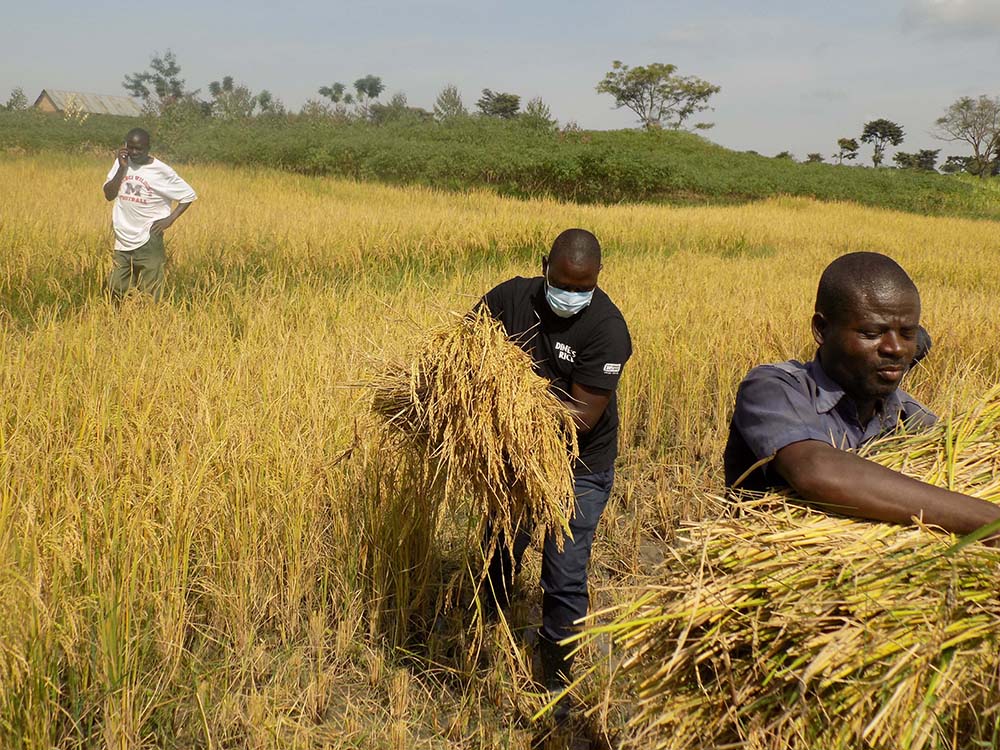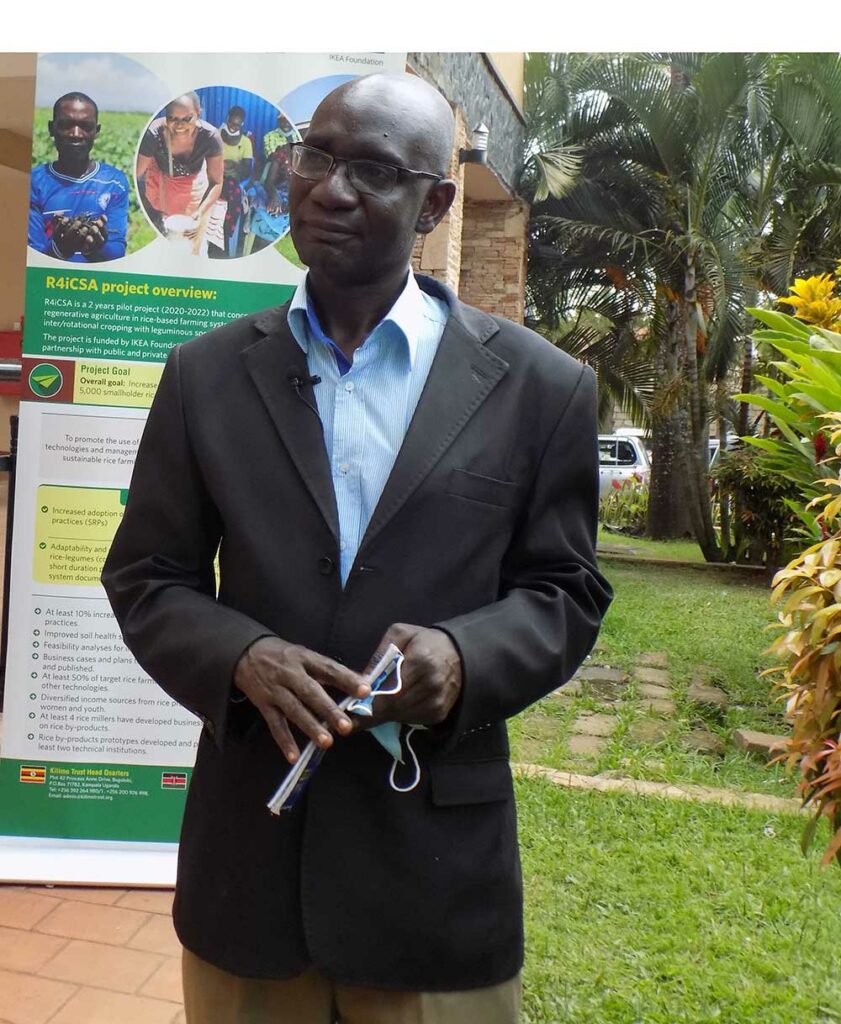James Mukwana is in the business of animal fattening, which are sold in December. He feeds the animals in banana stems, peelings, napier grass and any other grass he comes across. To get the banana stems, he has to move into neighbouring banana plantations, looking out for harvested banana stems.
However, the practice is tiresome.
“Sometimes there are no banana stems, and cows will have eaten all the grass available, so the business is good but feed is my biggest challenge,” explains Mukwana.
He adds that for a bull to attain the weight that attracts higher income of sh2m-sh3m, it has to attain more than 150kg.
Mukwana is one of the many livestock farmers in the highland areas in Elgon region, faced with the challenge of cattle and livestock feeds in general.

Introduction of rice straws as animal feeds
To help farmers like Mukwana, promoters of rice production in eastern Uganda are calling for the use of rice straws as feed for livestock. Rice straw according to the International Rice Research Institute (IRRI) is a rice by-product produced when harvesting paddy (unmilled rice).
Each kilo of milled rice produces roughly 0.7 – 1.4kg of rice straw depending on varieties, according to IRRI. The straws are attained when they are separated from the grains after the plants are threshed either manually, using threshers or using combined harvesters for those growing rice on large scale like Eastern and parts of Northern Uganda.
Dr Lawerance Owere, the director of Buginyanya Zonal Agriculture Research and Development Institute (BUGIZARDI), says people in high land areas have limited space for growing animal feeds that is why rice straws would be a viable option.
He adds that the lack of animal feed is not only a challenge for highlanders but also those in flat urban centers like Mbale city.
Owere further explains that since low land farmers in areas like Butaleja generate more rice straws which are most times left in the gardens to rot, as an institute, they are now encouraging highlanders to find ways of getting the straws to their farming premises.
In addition, the institute has also embarked on training farmers on how to make hay and silage from the straws which can be stored for times of scarcity.
Silage has more nutrients preserved per acre because there is less field loss, it is less affected by weather damage because the forage does not lie in the field drying. While hay is very rich in vitamins, minerals and proteins, its fiber is good for digestion, maintains intestinal flora making the animal healthy.
“We have discovered that the rice straws that are wasted by farmers in Butaleja can be used by highland people so we want to show them how to add value to the straws to make silage so this is one of the ways to use the waste of straws to help farmers because the value in rice straws is immense,” Owere explains.
Training farmers to turn straws into animal feeds
Owere adds that at the Buginyanya research station, they have introduced a project on pastures, focusing on rice straws, maize stovers and wheat straws to add value and make them available as feed for livestock.
“We can use these as feed, straws can be dried to make hay but are now also teaching farmers the right time of harvesting the straws and how to preserve them so that proteins needed by the animals remain intact,” Owere says.
Other benefits of rice straws are that they can be composited and used as manure within the field.
Do we have the supplies of rice straws?
Although rice is now proving to be more than grain we eat, due to its other useful by-products like straws and rice husks that can be turned into fertilisers and fuel, its production especially in eastern Uganda is declining, according to Owere. For example, the eastern region produces 40% of all the rice grown in Uganda.
“But in terms of productivity, we are still producing less. For some varieties, when combined with other technologies, a farmer can harvest 6 tonnes from one hectare against the average production of 2 tonnes per hectare, meaning, we are operating at a third of the actual capacity. That is why there is a need to support rice growers so as to get more waste,” Owere says.

Plans to increase the production of rice straws in Uganda?
Although rice straws are gaining popularity, research in Uganda today hasn’t been focusing on rice varieties that give off bigger straws; instead research in rice today focuses on increasing the yield.
But in countries like China, India, where they have satisfied the demand of food needs, they are now breeding rice varieties that not only yield more straws but also the grain.
“For Uganda, the struggle is to ensure food needs are solved, so we want to have the maximum output from rice in terms of grains. Then in future, it is possible for the breeding program to think of larger straws for animal feed the way India is doing to sorghum, millet where they are now breeding for the biomass,” Owere says.
Tips for making silage
Harvest fresh rice straws, Chop the rice straws in less than 2-inch length, spray superagric silage onto the chopped rice straws, compact the silage in silage bags, drums or pits. Tightly seal the storage medium to cut off air and Store it for 21 days for the silage to be ready for consumption.
Hay making
For hay, harvest the rice straws, dry the straws under shade, ball the straws, store the balled straws in a cool and dry place for future use.
When the above are put into practice more farmers with limited space will go for livestock using the zero-grazing method because there will be more sources of animal feed. Because at the moment, Uganda has 11,408,740 head of cattle as per the 2008 livestock census.





